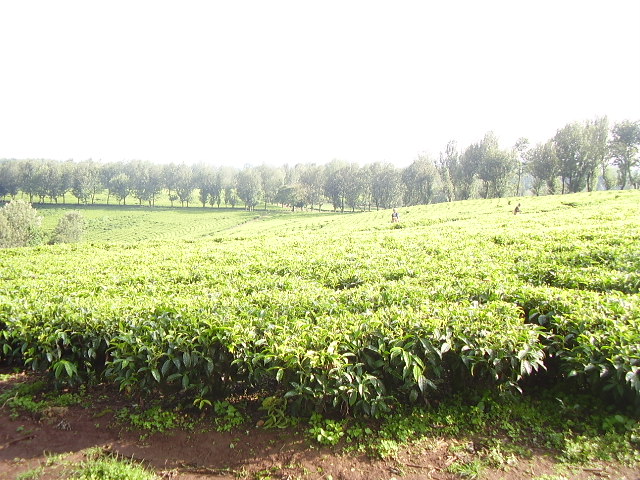In the
developing world the declining relative importance of agriculture for economic
growth, the increasing education and wealth of smaller populations of rural
producers, and the increasing use of externally purchased inputs have changed
the nature of publicly funded extension services. This has led to a questioning
of the means of delivery of extension services by governments. In developing
countries, however, publicly funded extension is considered to be important as
the contribution of agriculture to the national economy and employment is still
high, but still questions are raised about the structure and forms of extension
delivery.
Coincidental
with a shift toward more conservative political ideologies and free-market
economics, global developments suggest increased competition in agriculture.
While countries will focus more on their comparative advantages, they also in
many cases, still face national food security concerns and abject rural
poverty.
Governments
in recent times are less able to continue providing all the services previously
provided. With costs rising, limited resources available, and changes in the
prevailing philosophy of the appropriate extent of government intervention,
governments have been slow to increase appropriations for many publicly funded
activities. Some functions of government have been curtailed, and others have
been privatized. Such changes have been particularly significant in the
formerly centrally managed economies.
While
the unit cost of extension staff in many countries is low, large staff sizes
translate into large government outlays. As a result of financial concerns,
many countries have examined alternative structural arrangements, including the
feasibility of reducing public sector extension expenditures (with associated
staff reductions), changes in tax raising and charges for government extension
services, as well as commercialization and privatization. A number of countries
have moved towards reducing, recovering, or shifting the burden of the costs
associated with provision of public sector agricultural extension, particularly
by transferring "private good" functions to private industry.
Concerns
about the costs of extension need to be judged against the economic and social
returns associated with successful extension. While more research is needed on
measuring the economic payoff from investment in public sector extension
services, available research tends to indicate, in contrast to some current
criticisms, that extension in many instances provides high rates of return and
is, therefore, a profitable public investment.
In
addition, not all extension expenditure can be measured by benefits from
technology transfer and the benefits of extension concerned with human
development are difficult to quantify in the short term.
Public
sector extension faces criticism for its cost and its lack of efficiency and
for not pursuing programmes that foster equity, and is confronted with a number
of possibilities for change.
There
has been a trend, perceptible throughout various extension systems undergoing
adjustment, of greater flexibility and multiple partners in funding
agricultural advisory services. The three major policies adopted by government
and farm organizations regarding privatization of extension include:
1. Public financing by the taxpayer only for
the kinds of services that are of direct concern to the general public
2. Direct charging for some
individual services with direct return (in the form of improved income)
3. Mixed funding shared
between public and private professional association contributions for some
services where the benefits are shared.
A
pervading development in new forms of financial support for extension is the
trend towards using mixed sources of funding and using strategies aimed at
gaining access to additional sources of funding. In several developing
countries, public-private extension coordination is already established.
Alternative patterns indicate a fostering of private corporate initiatives,
encouraging cooperative ventures by farmers, coordinating public-private
extension services, and privatizing the public system.
The
need for improved and expanded extension activities, together with a
strengthening philosophical view of less government involvement in national
economies, has led to a number of strategies for changing the way extension
services are delivered.
In
some countries agricultural advisory service now operate under user-pay and
commercial criteria. The consulting fees received from farmers and contractual
arrangements with government for the supply of policy information and rural
intelligence to government are the sources of income for the agencies involved
in offering the advisory services.

Figure 15: large commercial farm
Other
public extension systems have moved toward cost-recovery approaches. Some
countries have developed a fee-based system among large-scale farmers.
Some
countries have replaced public extension delivery systems with vouchers that
are distributed by government services for farmers to use in hiring private
extension consultants. Coupons attached to agricultural bank loans, committing
a certain percentage of the loan for extension services, have also been used.
Some
countries have transferred their public extension service with initial
government financial support, to the farmer associations. The elements of the
extension service responsible for linking research and the privatized extension
services, policy preparation, implementation, promotion and regulatory tasks
remain under the aegis of the Ministry of Agriculture. The "privatized"
extension service is governed by a board on which farmers' organizations and
the government are equally represented.
A
review of extension services determined that, for government-provided services
conferring essentially private benefits to individuals, rather than cost
recovery by government fee charging, it is more desirable and more efficient
that private advisers deliver such services. However, because of the
complexities of extension service delivery and the varying nature and levels of
development of different agricultural sectors, a number of constraints were
identified which precluded universal application of such a principle.
In
most cases, governments have not actually "privatized" their
agricultural extension services. In its pure sense, privatization implies a
full transfer of ownership (usually by way of sale) from government to a
private entity, with that entity meeting all costs and receiving any profits.
In the case of extension, governments have followed a number of distinct pathways
such as commercializing the service while retaining it as a public agency,
shifting public sector delivery services to private sector delivery of the
service while maintaining oversight and basic funding of delivery, or pursuing
cost-recovery measures to pay for the service. Thus the phrase
"privatization of agricultural extension" generally is misleading.